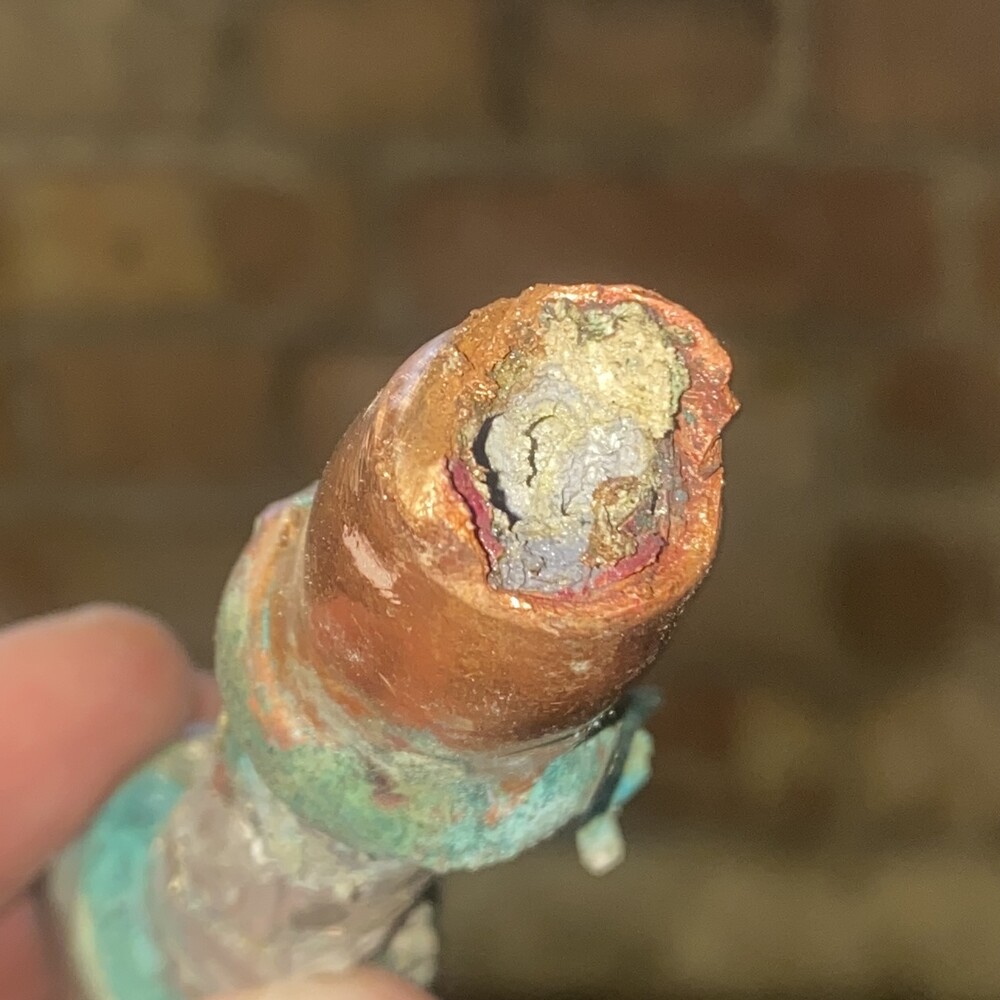Written by: Sam Green - Water Treatment Engineer - Technical Services
The Callout
I recently attended a call-out to a hydrogen peroxide dosing unit to replace a leaking injector. The unit continuously doses the mains supply to a cold water storage tank, controlled via a pulse water meter.
At first glance, it was a simple swap - but what I found was more complex.
What I Found on Site
After replacing the injector, I re-primed the dosing line, allowed the tank level to drop and re-fill with freshly dosed water.
However, testing for hydrogen peroxide in the stored water showed zero residual, even though the dosing unit was working correctly.
Investigations
Upon re-inspection of the injector, I found the temperature of the local pipework had risen to a scalding 92 °C!
Removing the injection fitting revealed a considerable, unexpected pressure build-up in the pipework that had already been isolated and drained.
When I inserted a screwdriver into the pipe, it hit a blockage so dense it could not be pierced, and even opening the mains would not dislodge it. The dosing pump had effectively been pumping against a brick wall, leading to the over-pressurisation and subsequent injector failure that triggered the original call-out.
 92.9 ºC recorded from pipework
92.9 ºC recorded from pipework
Root Cause – The Hydrogen Peroxide Reaction with Copper
Hydrogen peroxide is a strong oxidising agent, which makes it an excellent disinfectant for water treatment. But that same oxidising strength means it reacts with copper, forming cuprous (Cu⁺) and cupric (Cu²⁺) ions. This reaction is self-accelerating and can cause rapid, localised corrosion—especially in confined areas.
In this case, the corrosion products (copper oxides and hydroxides) accumulated and created a blockage in a reduced-bore section of 15mm pipework where a press-fit fitting was installed.
Note: Hydrogen peroxide can also react with other transition metals such as iron to similar effect.
The decomposition of hydrogen peroxide produces oxygen gas and heat. Normally, that heat is dissipated and is of no concern. In this blocked section of pipework however, copper catalysed the decomposition, rapidly generating more heat and gas, thereby increasing both pressure and temperature in the confined space. The elevated temperature, combined with continued dosing of hydrogen peroxide, further accelerated the decomposition rate and heat generation—resulting in a self-accelerating cycle (runaway decomposition). That is why the pipework temperature rose above 92 °C, with the pressure ultimately exceeding what the injector could withstand.
 Pipework blocked with copper corrosion products
Pipework blocked with copper corrosion products
The Fix
The solution was to re-pipe the dosing tee and a section of pipework using PVC pipework and fittings.
Plastic pipework is non-reactive with hydrogen peroxide at typical dosing concentrations, so will prevent further issues. Once hydrogen peroxide is sufficiently diluted, it’s no longer aggressive toward copper.
We installed composite unions, a length of PVC pipework and a PVC tee. A PVC isolation valve was installed off of the tee to allow inspection of the injector during regular servicing - without isolating the water supply.
After re-commissioning the dosing pump, the site has regained their secondary Legionella control measure.
 Newly installed PVC pipework (yes, it was left un-isolated!)
Newly installed PVC pipework (yes, it was left un-isolated!)
Key Takeaways
Where hydrogen peroxide is used for continuous dosing, the dosing point and a portion of pipework both upstream and downstream should be plastic.
The actual length before sufficient dilution will vary according to multiple factors such as concentration of hydrogen peroxide product, flow rate, dose rate, pipe size, etc. However, a 0.5 m - 1 m length of pipework downstream and 2x pipe diameter in length upstream should reasonably cover most foreseeable circumstances.
If you maintain or monitor a hydrogen peroxide dosing unit, check the pipework material at the dosing point. Consider proactively replacing the local pipework to prevent blockages, pinholes and loss of the chemical control measure.
